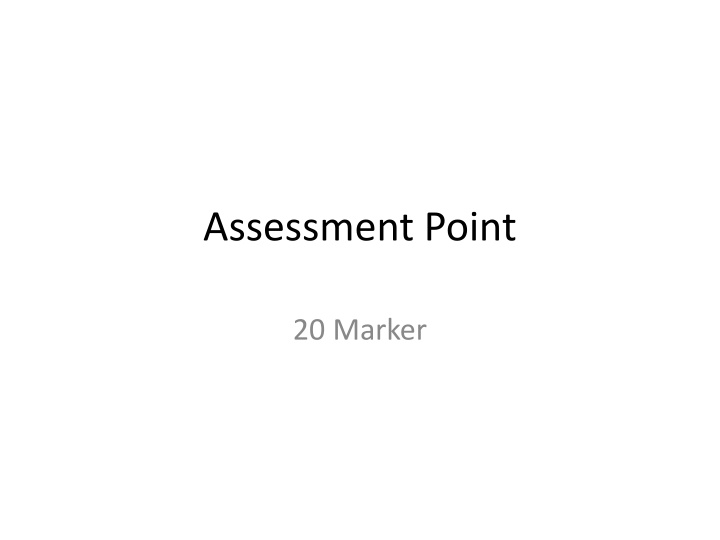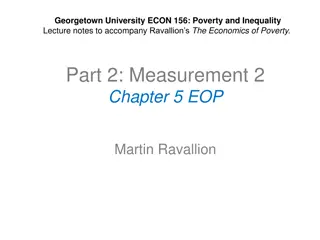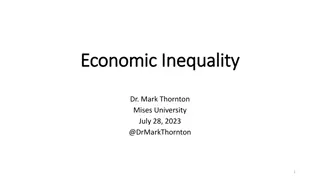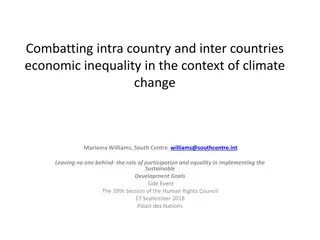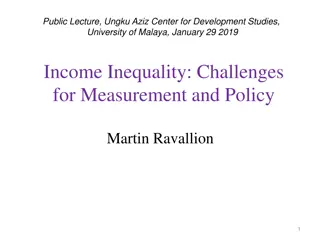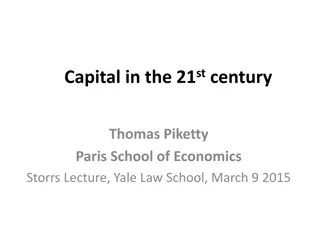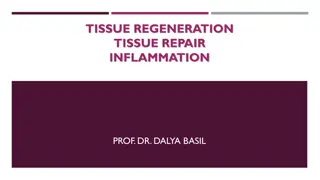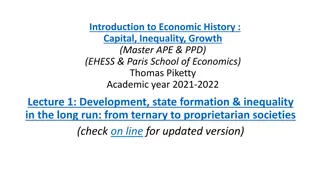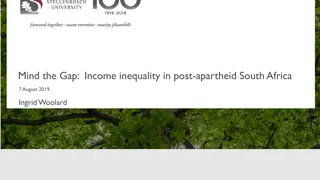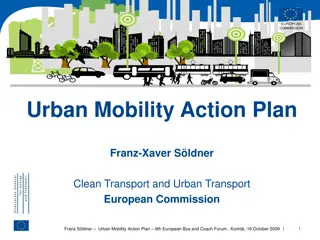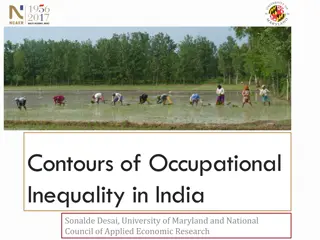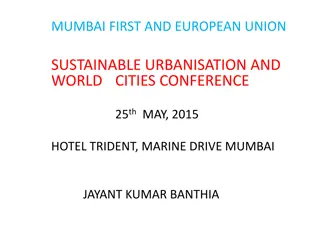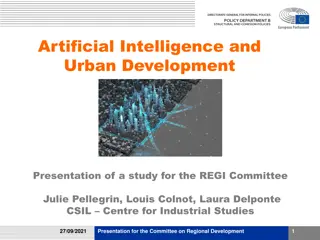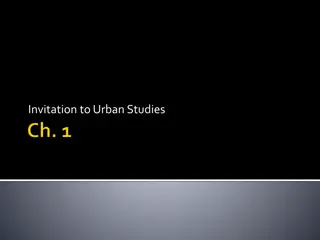Urban Regeneration Policies and Economic Inequality in Britain Since 1979
In analyzing Britain's urban regeneration policies post-1979, this question delves into the failure to address economic inequality and social segregation. It explores the widening gap between the richest and poorest urban residents, prompting a critical assessment of the effectiveness of these policies.
Download Presentation

Please find below an Image/Link to download the presentation.
The content on the website is provided AS IS for your information and personal use only. It may not be sold, licensed, or shared on other websites without obtaining consent from the author.If you encounter any issues during the download, it is possible that the publisher has removed the file from their server.
You are allowed to download the files provided on this website for personal or commercial use, subject to the condition that they are used lawfully. All files are the property of their respective owners.
The content on the website is provided AS IS for your information and personal use only. It may not be sold, licensed, or shared on other websites without obtaining consent from the author.
E N D
Presentation Transcript
Assessment Point 20 Marker
Britains urban regeneration policies since 1979 have failed to address the problems of economic inequality and social segregation. The gap between the richest and poorest urban residents has widened. To what extent do you agree with this statement? (20) Annotate the question: Command Word Key terms to define [Box idea to link everything back to]
Britains urban regeneration policies since 1979 have failed to address the problems of economic inequality and social segregation. The [gap between the richest and poorest] urban residents has [widened]. To what extent do you agree with this statement? (20) Greater/Lesser extent Fully developed ideas: because..this means that therefore..therefore
Economic inequality: Wealth divide/access to jobs/access to housing Social Segregation: Spatial concentrations of different groups of people dictated by wealth/race/religion You must refer to: Urban Development Corporations (LDDC) City Challenge (Hulme Manchester) Enterprise Zones (Solent) Britain s urban regeneration policies since 1979 have failed to address the problems of economic inequality and social segregation. The [gap between the richest and poorest] urban residents has [widened]. To what extent do you agree with this statement? (20) Greater/Lesser extent Fully developed ideas: because..this means that therefore..therefore
Economic inequality: Wealth divide/access to jobs/access to housing Social Segregation: Spatial concentrations of different groups of people dictated by wealth/race/religion You must refer to: Urban Development Corporations (LDDC) City Challenge (Hulme Manchester) New Deals for Communities (Plymouth) Britain s urban regeneration policies since 1979 have failed to address the problems of economic inequality and social segregation. The [gap between the richest and poorest] urban residents has [widened]. To what extent do you agree with this statement? (20) Greater/Lesser extent Fully developed ideas: because..this means that therefore..therefore Every feature of the regeneration schemes needs to link to whether it has widened/narrowed the gap between rich and poor
Have your Regeneration Policies Research in front of you Feature of the Scheme London Docklands Hulme City Manchester Solent Type of Policy Urban Development Corporation Property Led City Challenge Partnership and Competition Led Enterprise Zones Location Funding Aim Original State of the area What was built Scale of the project (Size) Advantages: Social Economic: Environmental: Disadvantages: Social Economic Environmental Overall Comment on Success
Feature of the Scheme London Docklands Hulme City Manchester Plymouth Type of Policy Urban Development Corporation Property Led City Challenge Partnership and Competition Led New Deals for Communities Area Based Initiatives Location Funding Aim Original State of the area What was built Scale of the project (Size) Advantages: Social Economic: Environmental: Disadvantages: Social Economic Environmental Overall Comment on Success Select the features of the policies that show 1: Widening of the gap between rich and poor 2: Narrowing of the gap between rich and poor
Britains urban regeneration policies since 1979 have failed to address the problems of economic inequality and social segregation. The [gap between the richest and poorest] urban residents has [widened]. To what extent do you agree with this statement? (20) Introduction: Define Key terms Introduce Urban Regeneration Policies State your opinion using persuasive language Paragraph 1: Aims and Funding: Discuss whether the policies aimed to reduce economic inequality/social segregation. Link back to whether the aim was to narrow/widen the gap Paragraph 2: Scale of the Projects: Discuss which policies/Projects will have significantly widened the gap/narrowed the gap. Has the size of the schemes affected the ability to address economic inequality/social segregation and therefore the impact on the gap has been insignificant? AO1: Knowledge and understanding Case Study facts of the Regeneration Schemes Paragraph 3: Original situation of the locations: Discuss how the original issues in the locations have affected the ability of projects, regardless of funding, to narrow the gap. AO2: Ability to argue the role the schemes have played in reducing the gap between rich and poor. Conclusion: Overall have certain factors outweighed others to narrow/widen the gap? Is there a policy/scheme where there has been greater success than others? State your final opinion using persuasive language
Britains urban regeneration policies since 1979 have failed to address the problems of economic inequality and social segregation. The [gap between the richest and poorest] urban residents has [widened]. To what extent do you agree with this statement? (20) Introduction: Define Key terms Introduce Urban Regeneration Policies State your opinion using persuasive language Paragraph 1: The policies have widened the gap Which features of the different policies have increased economic inequality? Which features of the policies have increased social segregation? Link back to whether the aim was to narrow/widen the gap Paragraph 2: Narrowed the gap Discuss which policies/Projects will have significantly narrowed the gap. AO1: Knowledge and understanding Case Study facts of the Regeneration Schemes Possible Ideas to argue: Scale of the projects has this made a difference? Original situation of the location Funding of the projects AO2: Ability to argue the role the schemes have played in reducing the gap between rich and poor. Conclusion: Overall have certain factors outweighed others to narrow/widen the gap? Is there a policy/scheme where there has been greater success than others? State your final opinion using persuasive language
Remember to link each idea back to how the schemes/policies have narrowed or widened the gap between rich and poor in the location you are discussing. Link each idea back to whether it has solved/reduced/increased economic inequality/social segregation (Policies may have targeted one/both/neither issue) Remember if the gap has been narrowed (there is greater opportunities for jobs/higher wages/affordable housing) then you are agreeing to a lesser extent If the gap has widened (Fewer job opportunities for all skills/job losses/increase in housing prices) then you are agreeing to a greater extent Colour Coded Answers: As you type or write your answer focus on either: AO1 (Knowledge) in one colour AO2 (Argument) in another colour OR Point Evidence Analysis Link In different colours Paragraph Structure: Point (What feature are you talking about?) Evidence (Data from your researched regeneration schemes) Explanation: Because..this means that..therefore Analysis/Explanation How has this had an impact on economic inequality/social segregation? Because..this means that..therefore..therefore Link: Link back to the question This therefore shows that .. Level 4 Answers: Synoptic Links: How can you link your ideas to other parts of the unit/course e.g. Urban forms (Spatial layout of a city) Persuasive Language: Clearly Hugely Great significance Played a major role Crucial
What are your arguments: Dependant on: Scale of the project small scale Vs large UDC and LDDC large scale (Evidence) NDC s small scale Have they widened/reduced the gap? To what extent
Dependant on the original aim of the project: NDC s very social focused Evidence of reducing social segregation UDC s very economically focused Evidence of widening the gap ( bn businesses forces locals out) UDC s result in increasing economic inequality and then indirectly increasing social segregation
Dependent on the original situation of the area Has the project widened the gap or was the gap large to start with. London Docklands: Contrast between the financial centre and the rundown dockers housing The gap is still there has the scheme widened it? City Challenge; Hulme was v socially segregated Has the project changed this?
Conclusion Scale/timescale Links to other geography topics Which factors outweigh others Significance of certain factors?
I PEAL PEAL C Rules for a 6, 9 and 20 mark answers: Very short introduction 1 2 lines Point (Good or bad if the question asks you to evaluate) Evidence (Fact or figure) Analysis How effective has this specific point been at achieving the aim: Research quite carefully the aim of the policy you chose e.g. is it economic/social/environmental or a combination. You cannot rate the success of a policy against aims it did not have. Link Refer back to the question use phrases such as You can clearly see .the economic benefits far outweigh the social negatives this factor appears to be hugely significant in Repeat with the opposite opinion Conclusion How much of a success has this scheme been? Overall it is evident that the social gains made were insufficient to match the economic advantages due to ..nevertheless ..
